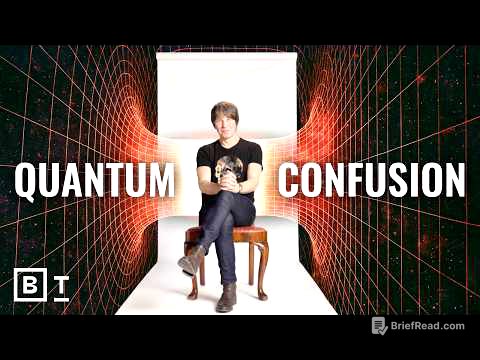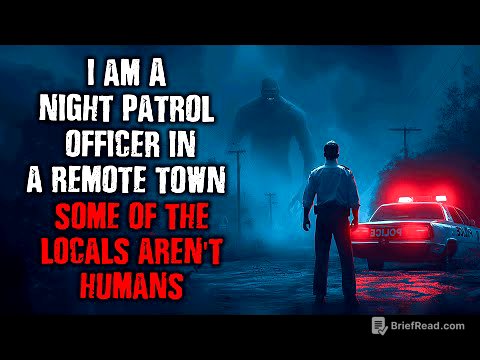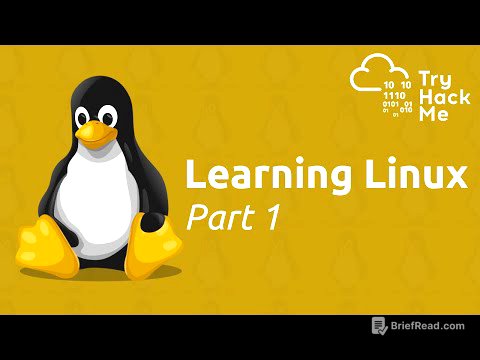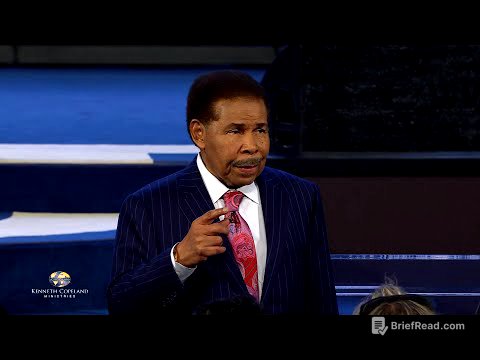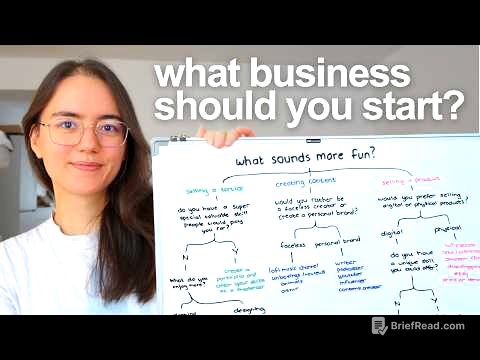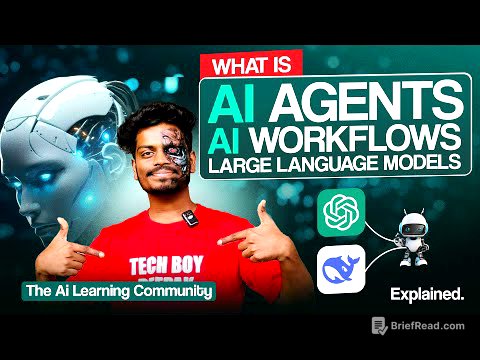TLDR;
Karim Busta's journey from France to Silicon Valley is explored, highlighting his experiences at Tesla with Elon Musk, Lift, and Softbank's Vision Fund. The discussion covers cultural differences, the intensity of Silicon Valley work environments, and the unique leadership styles of Musk and Masayoshi Son. Busta shares insights into Tesla's innovative approaches, the challenges at Lift, and his current venture studio, Divax, which aims to build startups with a different model focused on efficient resource allocation and active founder involvement.
- Karim Busta's career in Silicon Valley, including Tesla, Lift, and Softbank.
- Cultural and professional differences between France and Silicon Valley.
- Elon Musk's leadership style, vision, and the intensity of working at Tesla.
- Challenges at Lift and the importance of company culture.
- Masayoshi Son's investment strategies and millennial vision.
- Karim Busta's venture studio, Divax, and its unique approach to building startups.
Intro [0:00]
Karim Busta's journey from France to Silicon Valley is introduced, highlighting his roles at Tesla, Lift, and Softbank's Vision Fund. The intro emphasizes the unique experiences and insights Busta gained working alongside Elon Musk and Masayoshi Son, promising anecdotes and truths rarely heard in France.
Conto Sponsor [0:54]
The host promotes Conto, a partner that simplifies business administration for entrepreneurs, handling legal support, capital deposits, and pro accounts online. Conto is presented as an effective solution for those starting micro-businesses, SAS, or SRLs, with a current offer of business creation services, excluding mandatory legal fees.
From France to Silicon Valley [1:58]
Karim Busta discusses his background, starting as an engineer from Telecom Paris and later earning an MBA. He shares his early preference for American corporate culture, which led him to work for companies like Proctor & Gamble and General Electric. Busta recounts his initial reluctance to move to Silicon Valley, eventually accepting a position with a startup acquired by GE. He describes the ease of the move due to his wife's job in tech and the initial expat contract with a return clause, which he quickly removed after enjoying the dynamic environment.
Cultural Shock [6:08]
Busta describes the fast-paced, innovative, and fluid professional environment of Silicon Valley, contrasting it with his experiences in France. He notes the significant cultural gap between France and Silicon Valley, highlighting an early experience where he was surprised by the lack of a shared lunch break. He also observes that people in Silicon Valley often struggle to disconnect from work, with friendships frequently tied to professional interests, a dynamic he finds difficult to get used to.
Joining Tesla [9:10]
Karim Busta recounts his experience joining Tesla at the end of 2015, a time when the company's industrial capacity was still in question. Despite the doubts, he considered it a dream job and was drawn to Elon Musk's vision of revolutionizing the automobile industry. Busta describes his initial meetings with Musk, where he was told about the ambitious goal of building the biggest company in the world by imposing electric vehicles.
Interview Process with Elon Musk [11:07]
Busta details the intense interview process at Tesla, which involved meeting around 15 people before meeting Elon Musk. He describes the extensive preparation for the meeting with Musk, including a two-hour briefing with his chief of staff and HR to prepare him for Musk's unconventional interview style. The preparation included the fact that there is no schedule, no preamble, and the interview starts directly. Busta explains the three phases of the interview: an initial four-minute assessment of personal connection, a ten-minute deep dive into a specific problem the candidate solved, and a longer discussion if the candidate passes the initial assessments.
The First Four Minutes [17:44]
Karim Busta describes the initial four minutes of his interview with Elon Musk, noting the absence of physical contact or small talk. Musk immediately began explaining his vision for Tesla, focusing on building the biggest and most revolutionary company in the world. Busta, who was being recruited for a customer service role, expressed his lack of knowledge about cars, to which Musk responded that it was a positive trait, as he wanted someone who could break industry norms. Busta also recounts how he initially doubted himself but then decided to challenge the notion that an overly confident American would be better suited for the role.
The 10 Minute Deep Dive [23:23]
Busta explains that in the second part of the interview, Elon Musk asked him to describe a difficult problem he had solved. Busta recounted his experience helping a startup that made explosive detection systems for airports, detailing the quality issues and the steps he took to resolve them in a short timeframe. Musk asked very specific questions about the technical aspects of the problem, challenging Busta to ensure he truly understood the details. Busta also shares that during the interview, Musk received an urgent message from SpaceX about a problem with a launch, showcasing his ability to multitask and shift contexts quickly.
Second Interview and Tesla's Marketing Strategy [27:23]
Karim Busta describes his second interview with Elon Musk, where they discussed Musk's vision for customer relations and creating a product that people would love. He notes that Tesla had millions of supporters despite spending almost nothing on traditional marketing. Busta recounts an incident where Musk was upset to discover that Tesla was spending $6 per car on marketing, as he believed it should be zero.
Joining Tesla and the "Crash Test" [31:44]
Busta recounts how, after signing his contract and receiving his Tesla badge, he attended a crisis meeting three days into his new job. Elon Musk confronted him, saying he hadn't seen any difference since Busta's arrival. Busta realized this was a "crash test" and responded by outlining his plans for the next three weeks. Musk calmed down and discussed strategy, and Busta understood that such tests were common to ensure employees were fully committed.
Tesla's Atmosphere and Elon Musk's Genius [36:16]
Karim Busta describes the atmosphere at Tesla as hyper-focused and intense, but also stimulating and empathetic due to Elon Musk's lack of empathy. He notes that the environment was less political than others he had experienced, as everyone was focused on the company's success. Busta shares an experience of riding in a Model 3 for the first time and realizing it would change the automobile industry, highlighting Musk's influence on the design, simplification, and software integration.
Elon's Convictions and Tesla's Platform [40:06]
Busta explains that Elon Musk's genius is rooted in his strong convictions and refusal to give up on his ideas. He describes Tesla's hypersimplified architecture, where the same electrical architecture manages various functions, allowing for software-based changes. Busta recounts how Musk insisted on removing all mechanical buttons, even for opening the glove box, prioritizing design over practicality. He emphasizes that Musk accepts failure as part of innovation, encouraging rapid experimentation and learning from mistakes.
Tesla's Strategy and Safety Concerns [46:56]
Karim Busta explains that Tesla's strategy was simple: to launch the Model 3 and achieve mass production. He notes that safety concerns were addressed by establishing clear principles, such as prioritizing safety above all else. Busta recounts how he managed the Takata airbag recall, deciding to execute it immediately despite the company's financial difficulties.
The Model Y and Elon's Beliefs [51:02]
Busta shares an anecdote about the Model Y presentation, where Elon Musk was shocked to see a steering wheel, as he believed cars would be fully autonomous by then. He explains that Musk genuinely believed in his predictions, aligning the company accordingly. The engineers secretly maintained a version with a steering wheel, and when it became clear that full autonomy was not feasible, Musk reversed his decision without acknowledging the wasted time.
Tesla's Exhausting Environment and Inspiration [54:50]
Karim Busta reflects on the exhausting nature of working at Tesla, managing constant challenges and navigating Musk's unattainable goals. He believes Tesla's technological choices and software integration are revolutionary and inspiring for other manufacturers. Busta notes that while Musk's management style can be inhuman, the teams and managers find ways to leverage the clarity and focus to achieve remarkable results.
Elon's Management Style and Departure [56:58]
Busta describes Elon Musk's management style, noting his ability to hold meetings with teams of all levels and his intolerance for negativity or defensiveness. He recounts how Musk could dismiss someone on the spot for expressing doubt or negativity. Busta also shares that while Musk may not have had close friends at work, there were people he trusted during moments of depression or anxiety. Busta explains his decision to leave Tesla after nearly three years, feeling he had achieved his goals and wanting to leave before things declined.
Leaving Tesla and Joining Lift [1:01:00]
Karim Busta describes his careful preparation for leaving Tesla, as departures rarely went smoothly. He recounts his conversation with Elon Musk, who thanked him for his contributions. Busta then discusses his decision to join Lift, attracted by the opportunity to work with a different kind of company and people.
Joining Lift and the Culture [1:02:50]
Karim Busta explains that he joined Lift after meeting the CEO and being drawn to the company's benevolent atmosphere. He notes that Lift valued his experience at Tesla, particularly his ability to scale organizations. Busta describes Lift as the "good guys" in contrast to Uber, with a focus on treating drivers well.
Lift's Challenges and the Lack of "Hardcore" [1:09:13]
Karim Busta discusses the challenges he faced at Lift, noting that the company's employees lacked the "hardcore" mentality he had experienced at Tesla. He explains that many employees were comfortable and lacked the drive needed to succeed in a competitive industry. Busta contrasts Lift's approach with Uber's aggressive mindset and willingness to take risks.
Lift's IPO and Shift in Strategy [1:14:21]
Busta recounts an anecdote where Lift employees were more concerned about the removal of free breakfast items than the company's IPO. He notes that after the IPO, Lift shifted its strategy to copy Uber, abandoning its focus on treating drivers well. Busta reflects on the importance of maintaining a balance between shareholders, customers, and drivers, and how Lift's shift in priorities led to a decline in market share and stock valuation.
Leaving Lift and Joining Softbank [1:26:08]
Karim Busta expresses his disappointment with Lift, feeling that the company could have achieved more. He then discusses his transition to Softbank, taking on an advisory role as an operating partner. Busta explains that Softbank sought his expertise to help their portfolio companies, particularly those facing operational challenges.
Softbank's Vision Fund and Masayoshi Son [1:28:38]
Karim Busta describes Softbank's Vision Fund and its leader, Masayoshi Son, highlighting Son's millennial vision and investment strategies. He notes Son's focus on artificial intelligence and his tendency to make investment decisions based on instinct. Busta shares an anecdote about a company that received a significantly larger investment after impressing Son in an elevator pitch.
Softbank's Investment Thesis and Get Around [1:35:59]
Busta explains that Softbank's investment thesis involved over-multiplying capital deployment, but this often led to negative consequences, such as a loss of focus and discipline. He then discusses his involvement with Get Around, a car-sharing company that had received a large investment from Softbank. Busta recounts how Get Around had spent its funds and was in dire financial straits, leading to his appointment as CEO.
Get Around and the Acquisition of Drivy [1:38:13]
Karim Busta explains that Get Around had acquired its European competitor, Drivy, but was struggling financially. He notes that Drivy had better technology and a more sustainable business model, but Get Around had raised more capital. Busta describes his efforts to stabilize Get Around, including cost reductions and a focus on essential workers during the COVID-19 pandemic.
Becoming CEO of Get Around and the Spack [1:43:18]
Busta recounts how he became CEO of Get Around and successfully convinced Softbank to provide additional funding. He then discusses the process of taking Get Around public through a Spack merger. Busta notes that the US branch of Get Around was eventually closed, while the French branch, formerly Drivy, continued to operate.
Lessons Learned and the Launch of Divax [1:46:10]
Karim Busta reflects on his experiences at Tesla, Lift, and Get Around, noting the waste and inefficiencies in the classic startup model. He discusses his decision to launch Divax, a venture studio that aims to build startups with a different model focused on efficient resource allocation and active founder involvement. Busta explains that Divax invests in its own ideas and acts as both an investor and founder.
Divax's Investment Thesis and Model [1:51:05]
Busta explains Divax's investment thesis, which involves identifying startups that are likely to succeed early on and focusing resources on them, while quickly stopping those that are not. He emphasizes the importance of active involvement and the ability to influence a company's trajectory. Busta notes that Divax's model is hyper-concentrated and involves a different return on investment strategy compared to classic venture capital.
Finding the Right Entrepreneurs for Divax [2:00:42]
Karim Busta discusses the challenges of finding the right entrepreneurs for Divax, noting that they look for builders who are resourceful and have a "fire in the belly." He explains that Divax focuses on smaller cycles, finding people who can take a company from zero to one, rather than someone who can manage it for 10-15 years. Busta emphasizes the importance of finding a founder-market fit, someone with a passion for the problem and relevant experience.
Addressing Concerns About Fundraising with Divax [2:06:44]
Busta addresses concerns about fundraising with Divax, acknowledging that investors may be wary of the studio's significant equity stake. He explains that Divax is an active founder, not dead weight, and that investors are investing in the team of founders, including experienced and respected individuals. Busta emphasizes that Divax's model requires a different understanding and that they have been successful in raising funds from prestigious investors.
Outro [2:11:59]
The host thanks Karim Busta for sharing his experiences and insights, noting that they are rarely heard in France. He concludes by thanking the listeners and promising more interviews with French individuals in Silicon Valley and the US.

